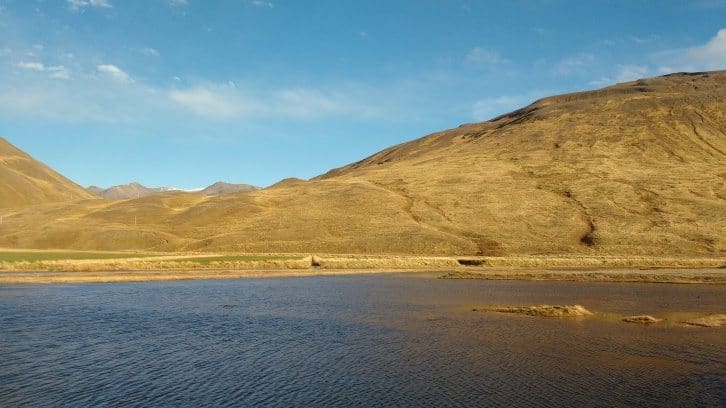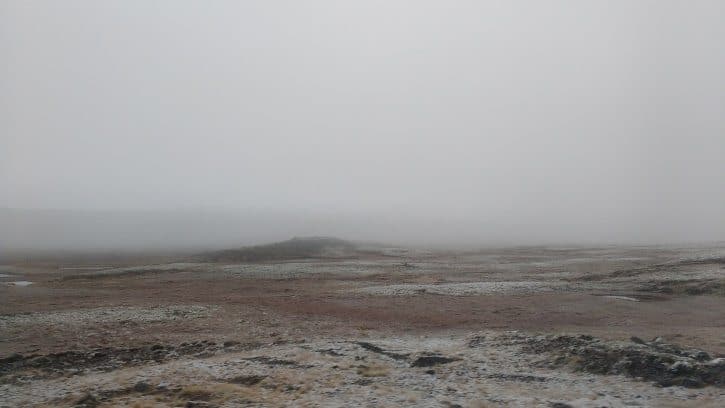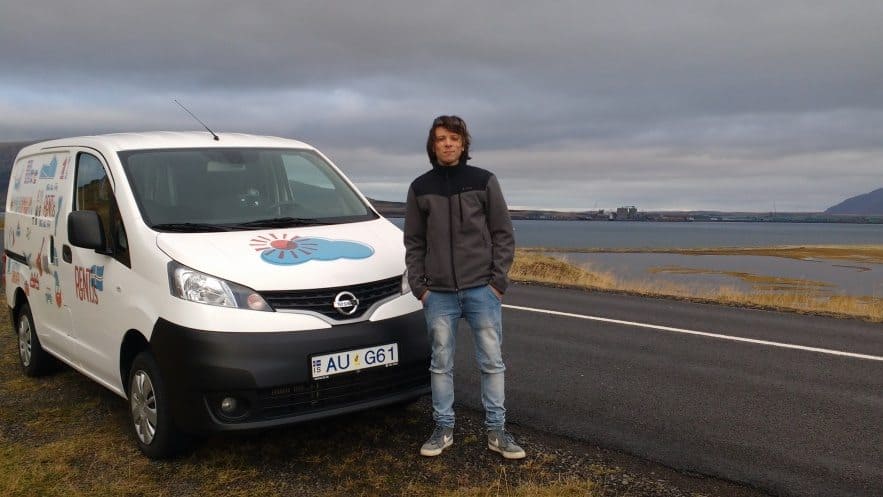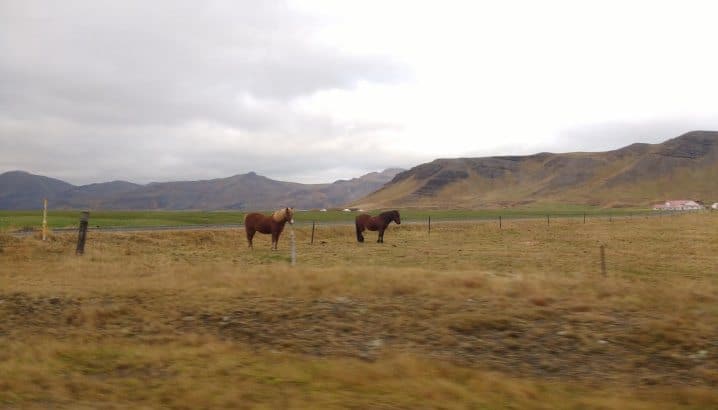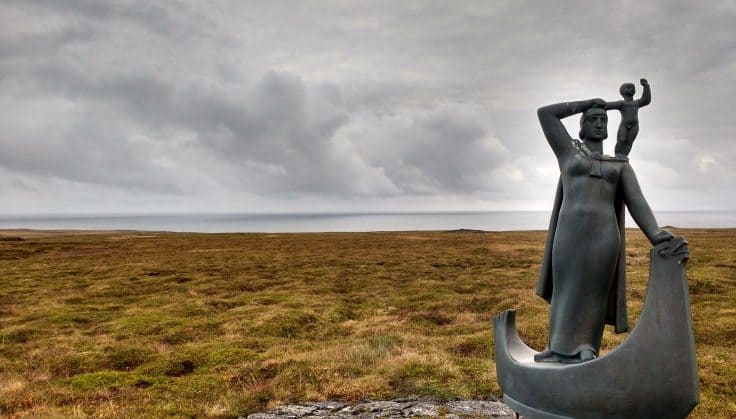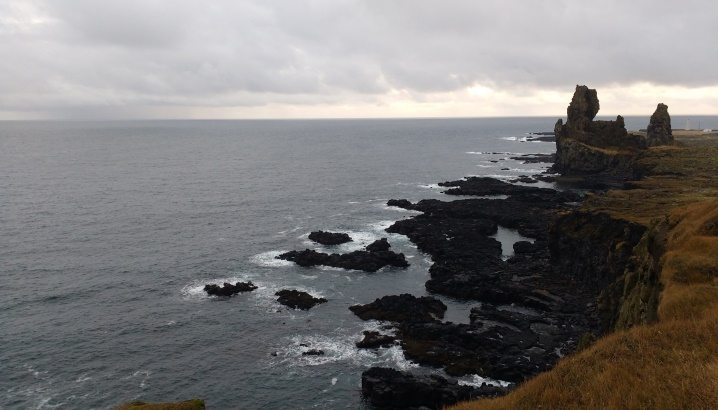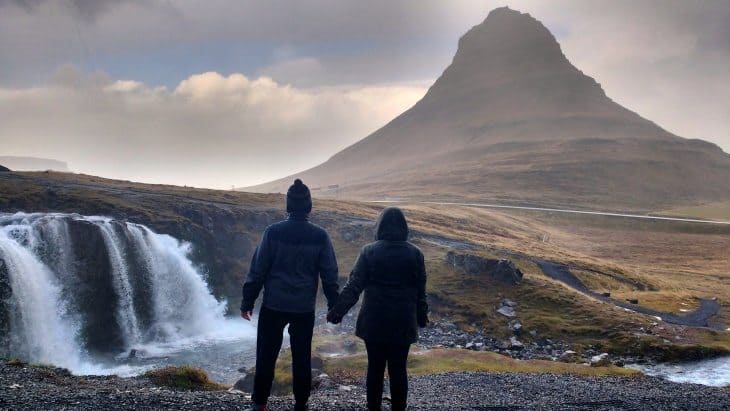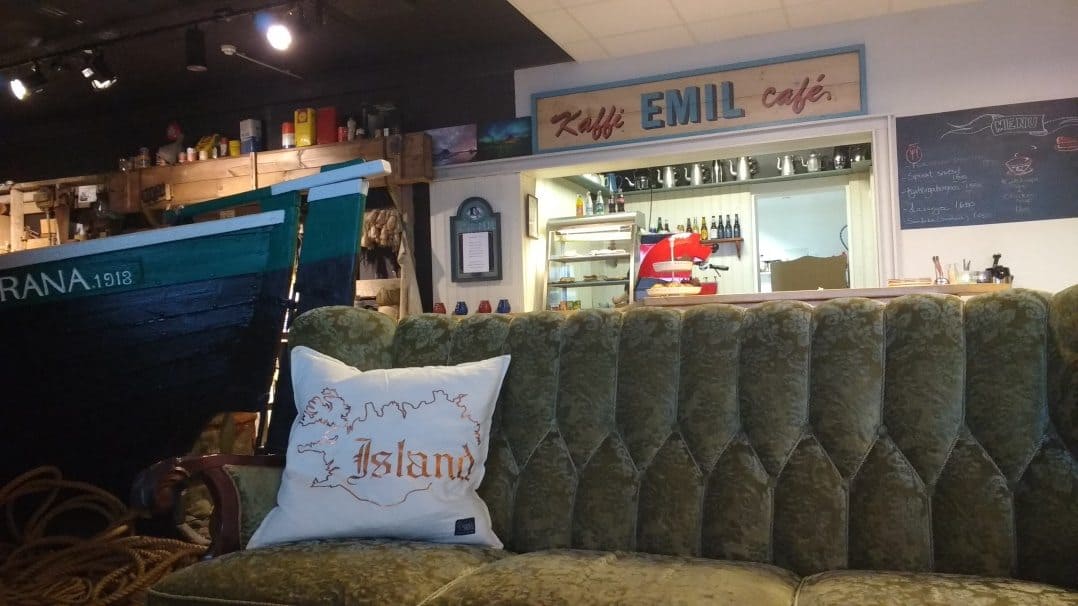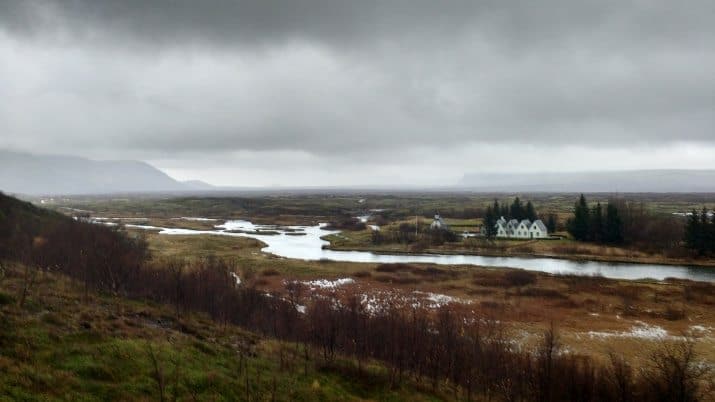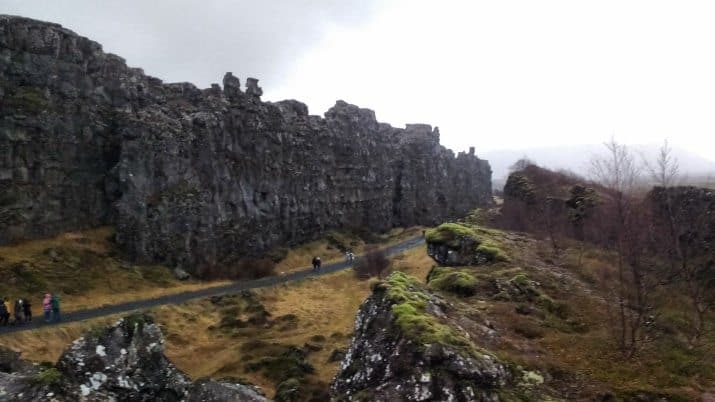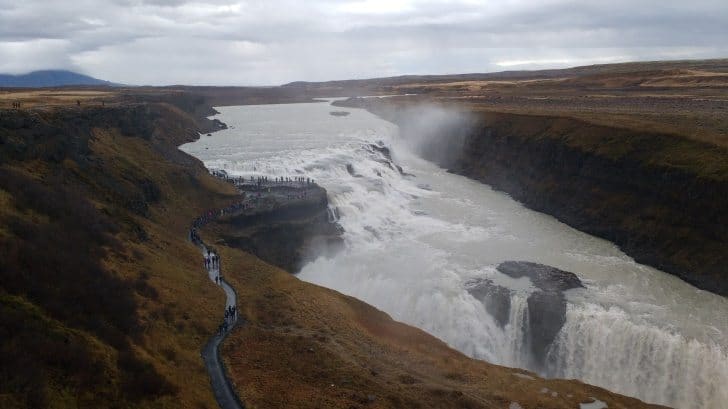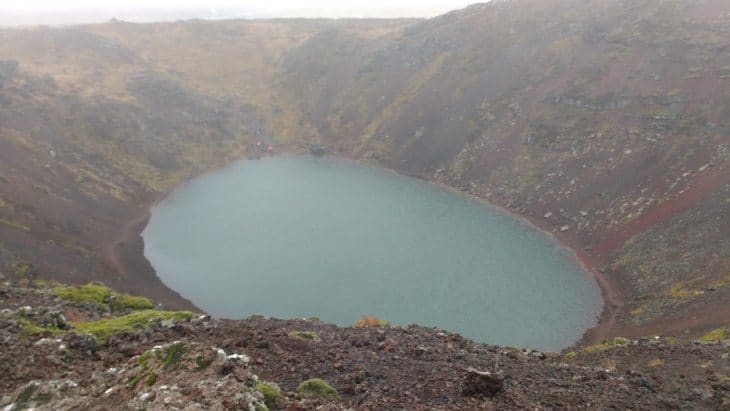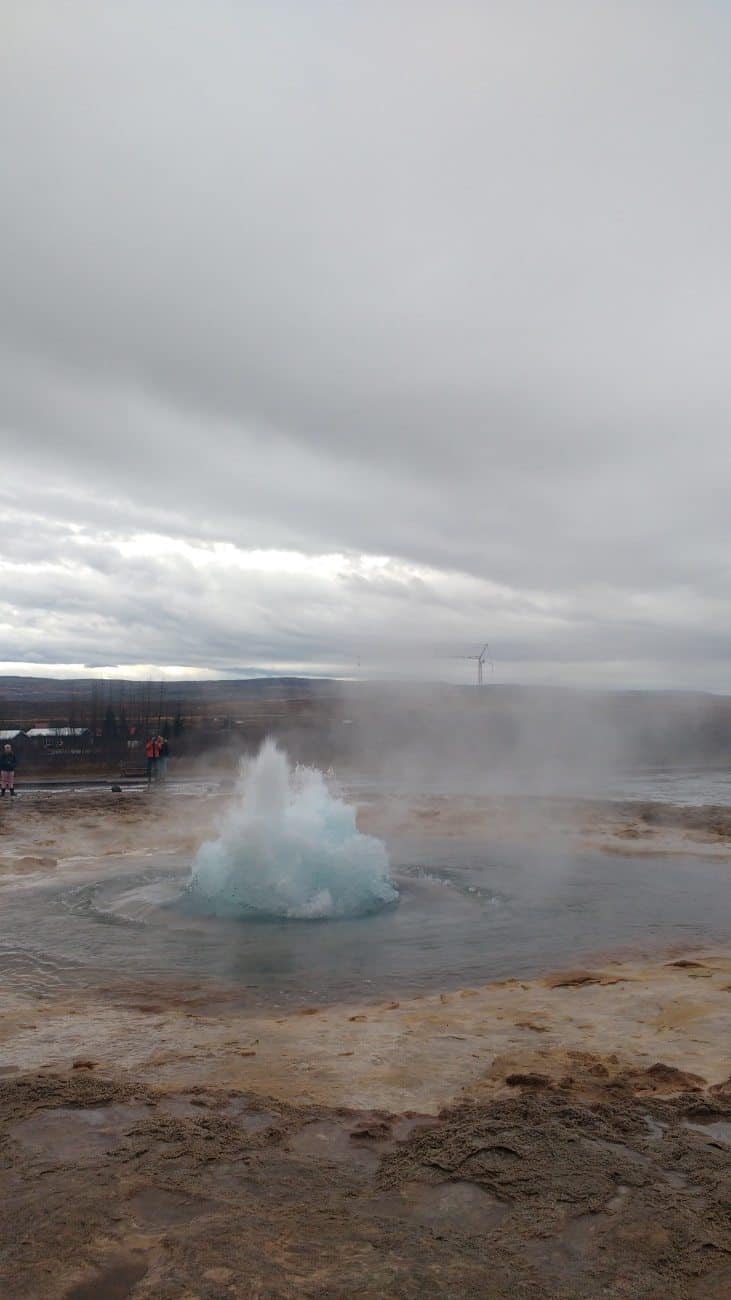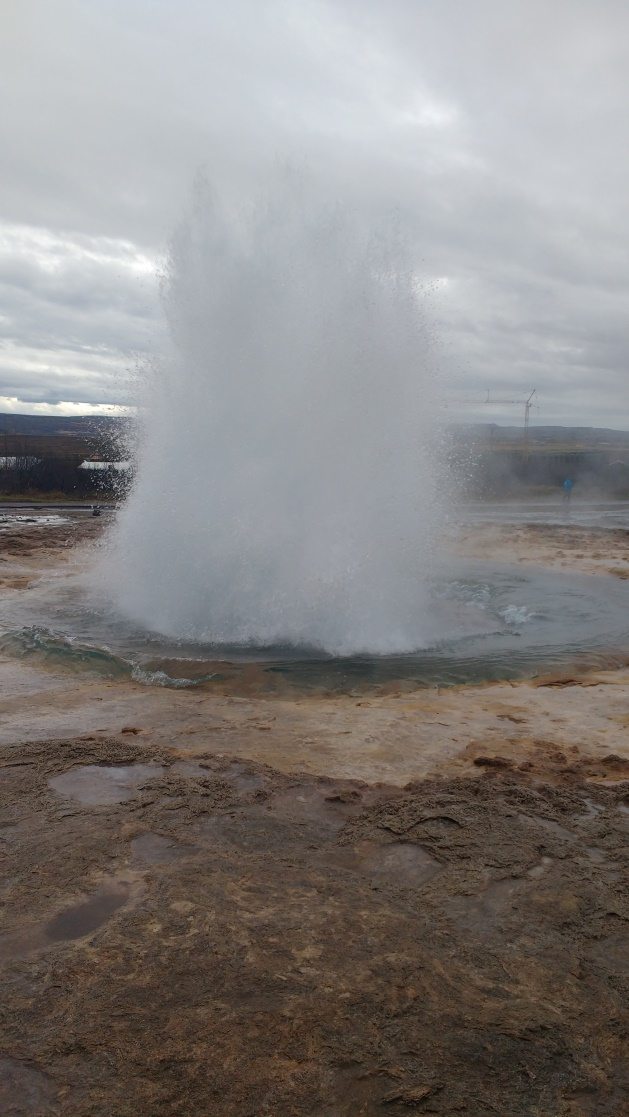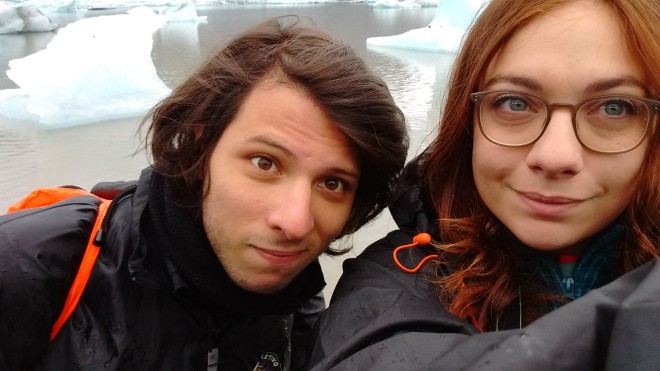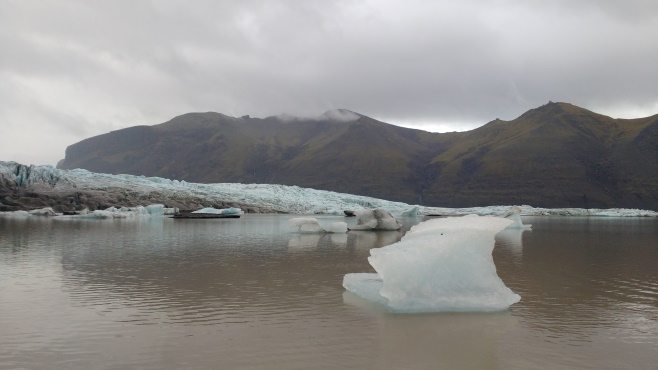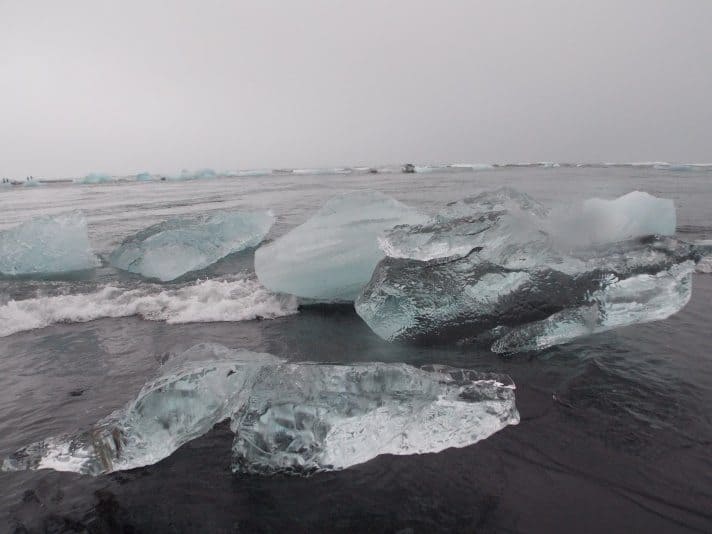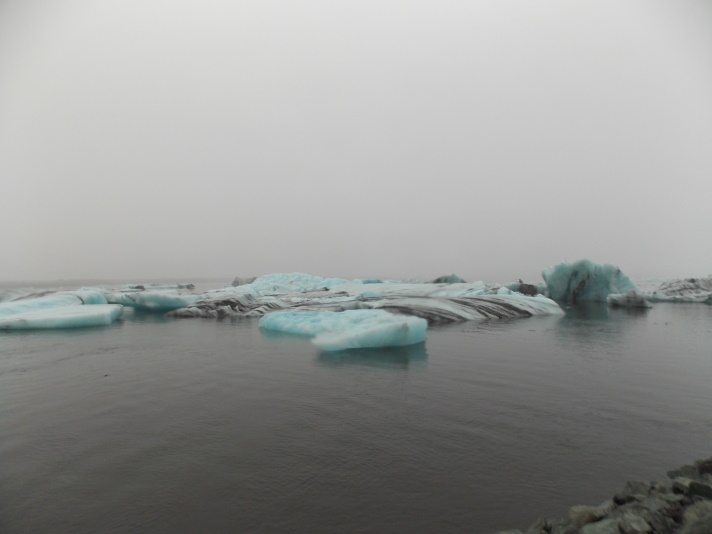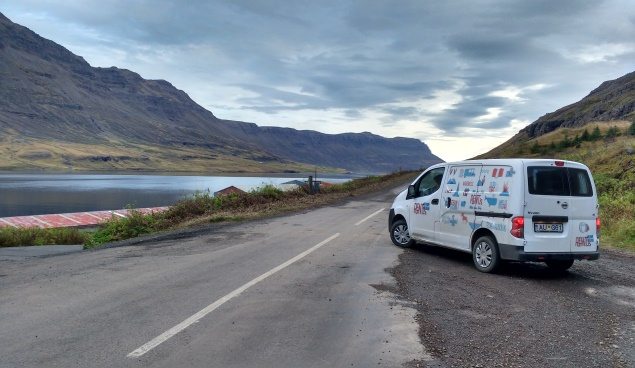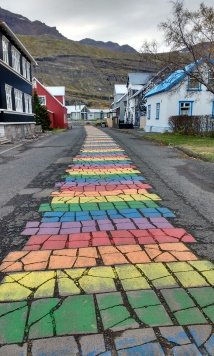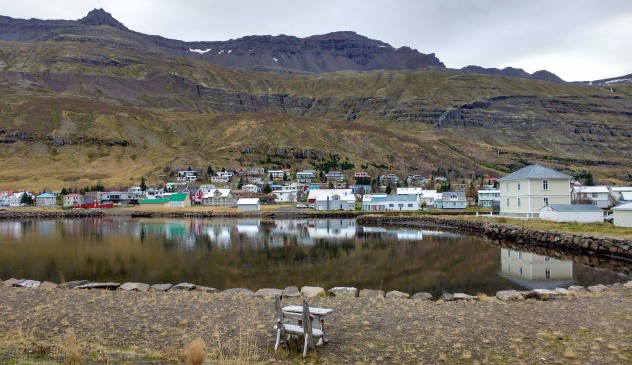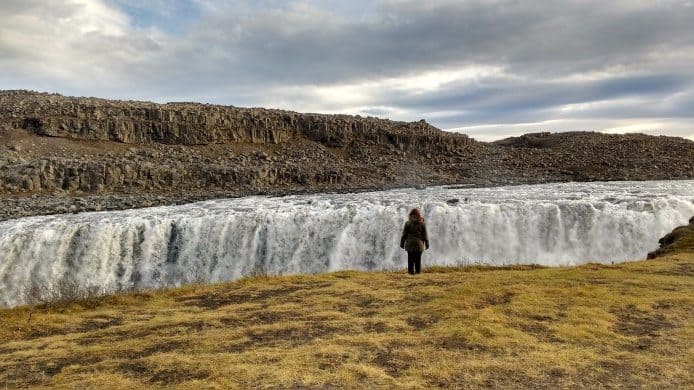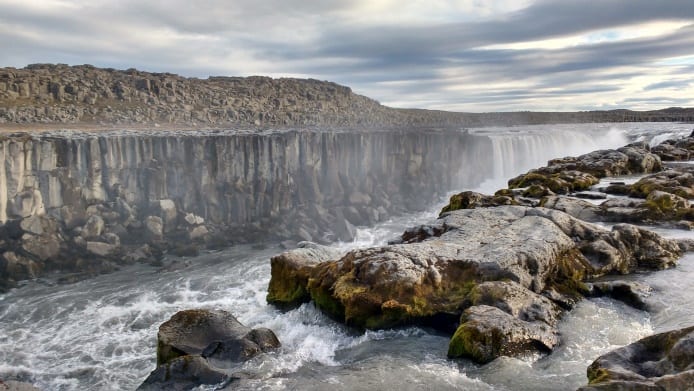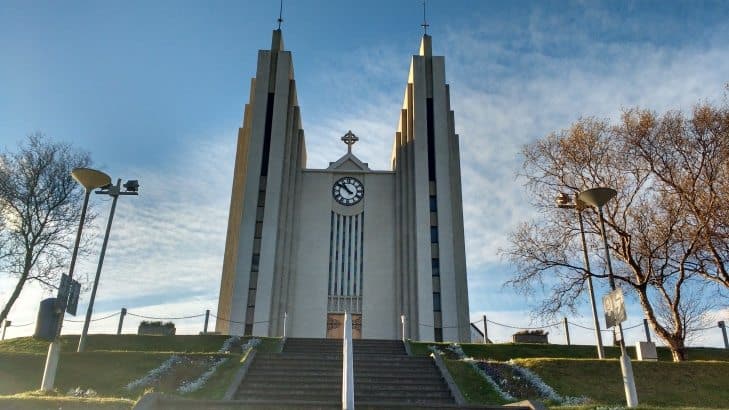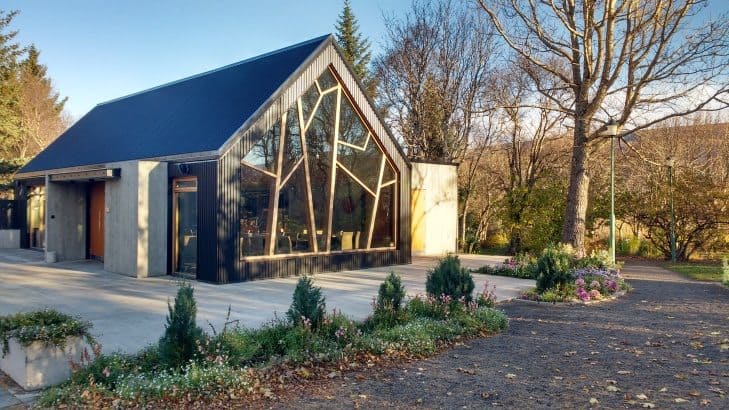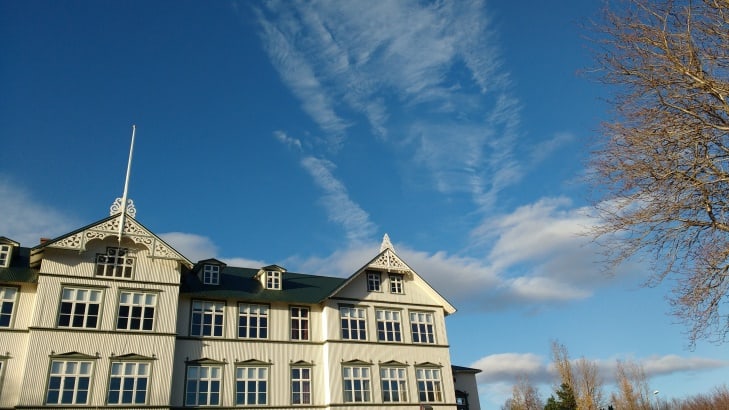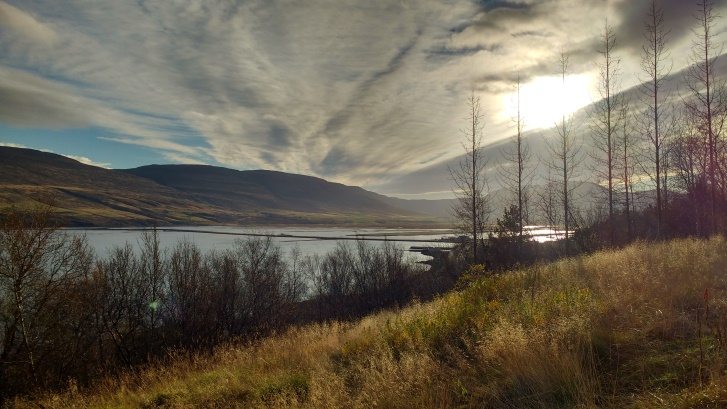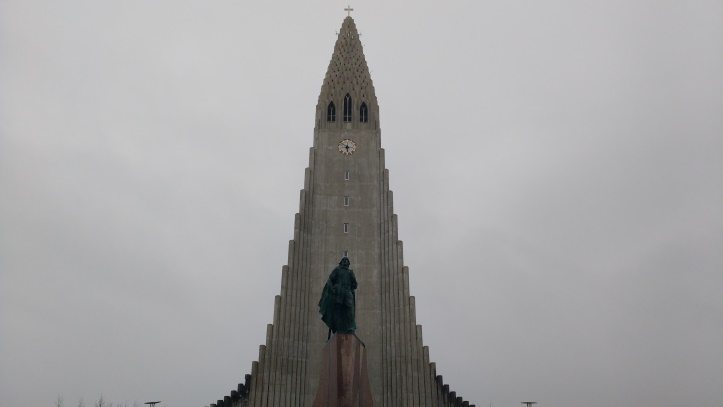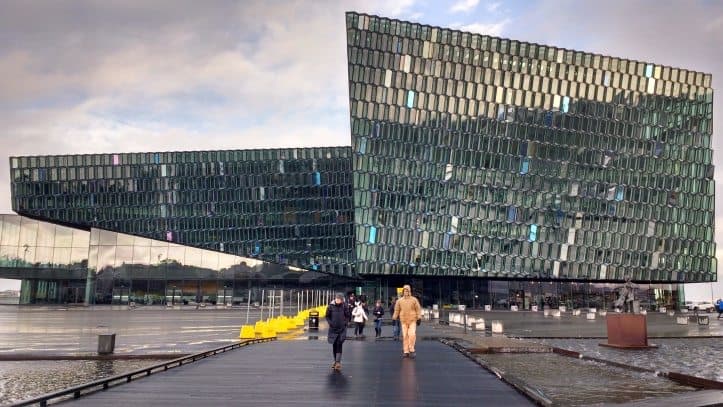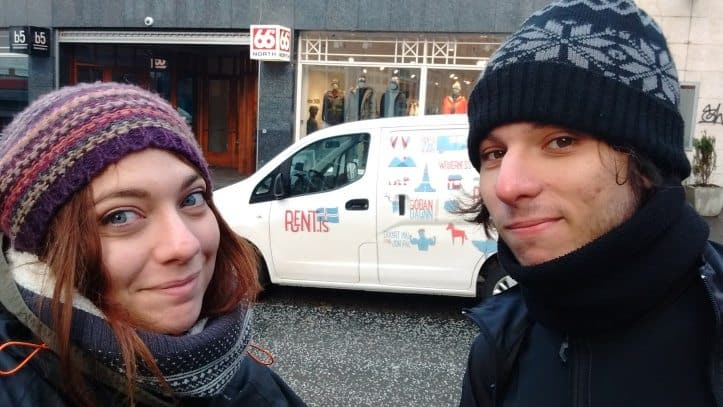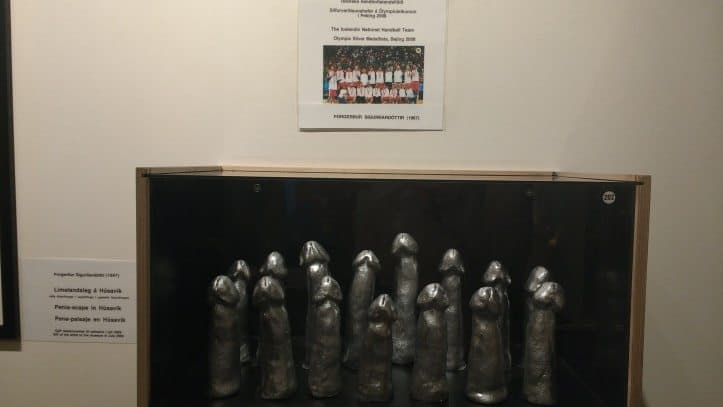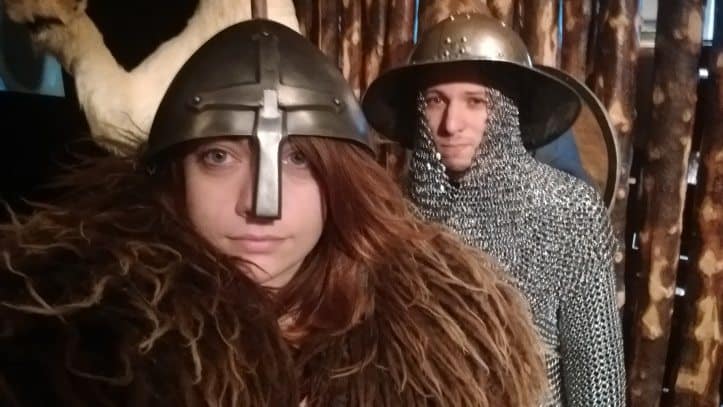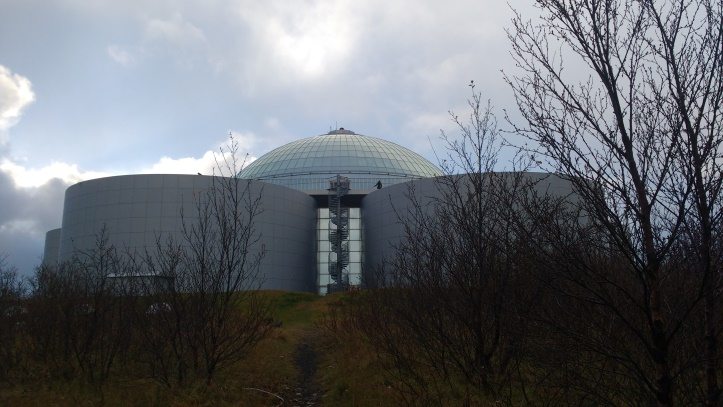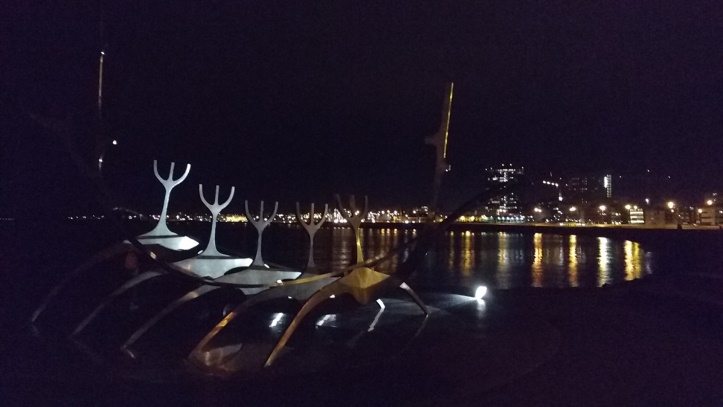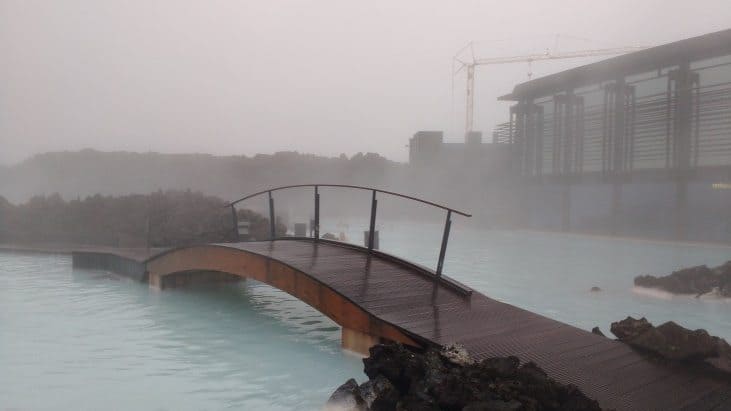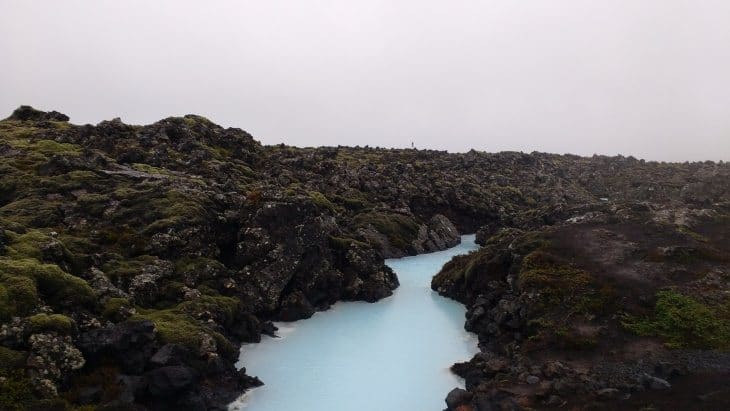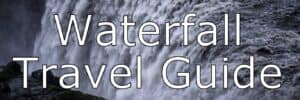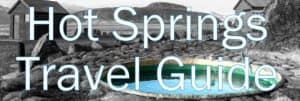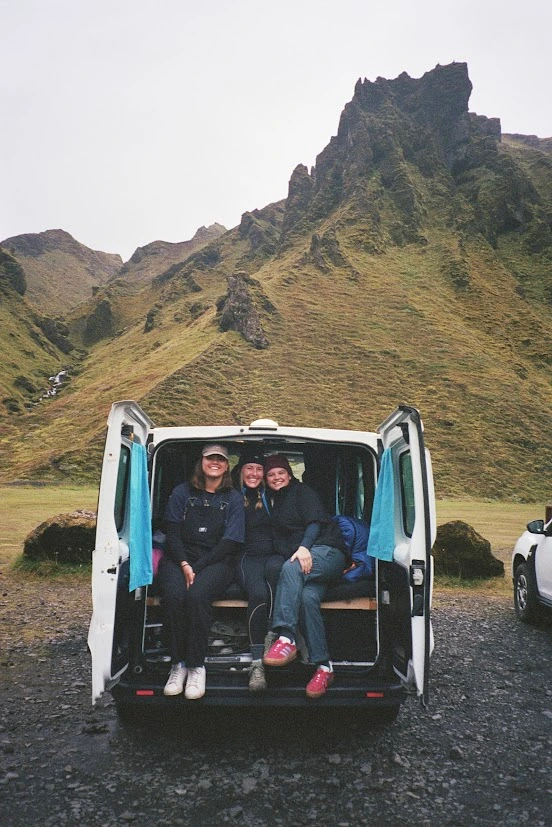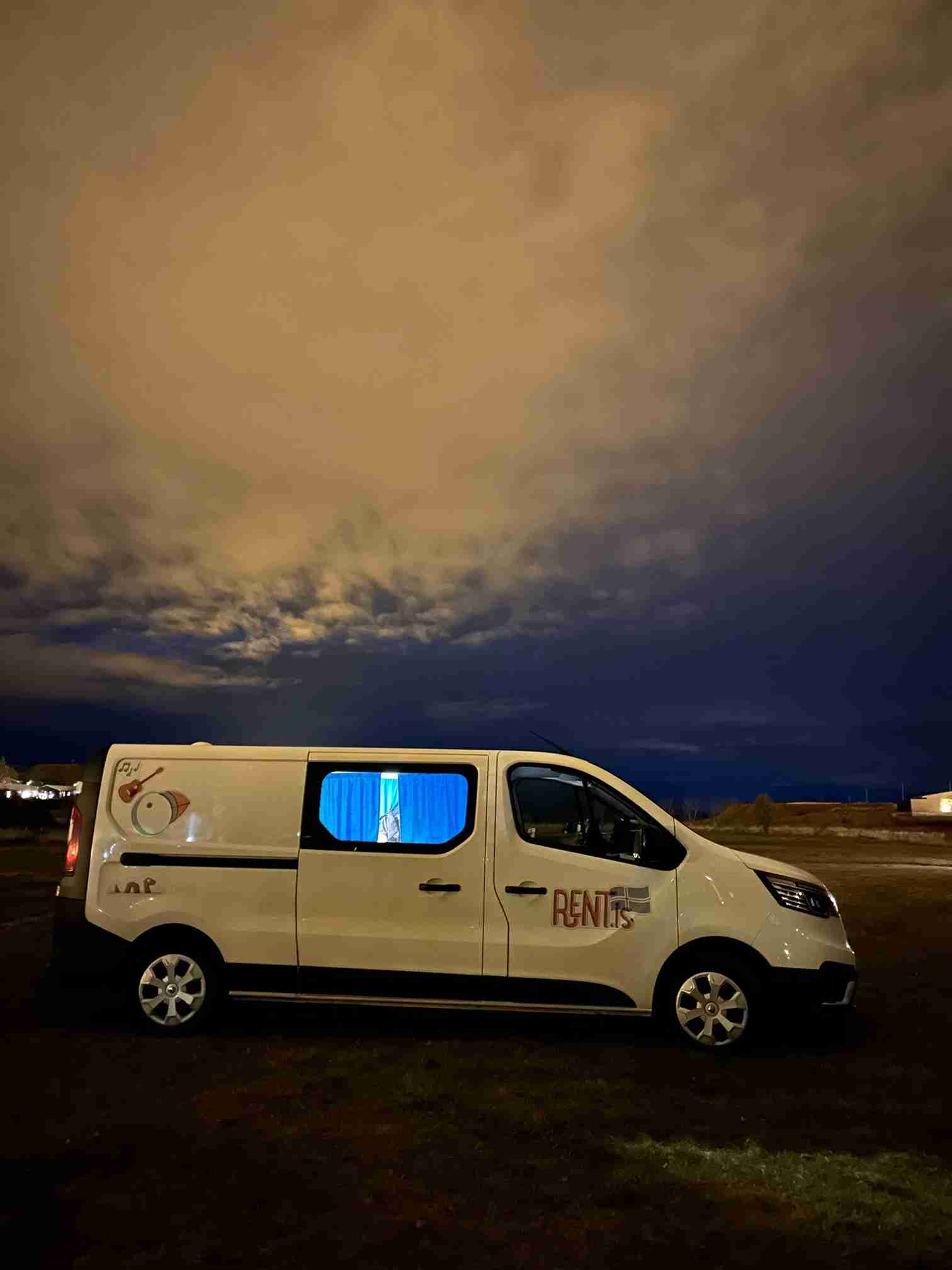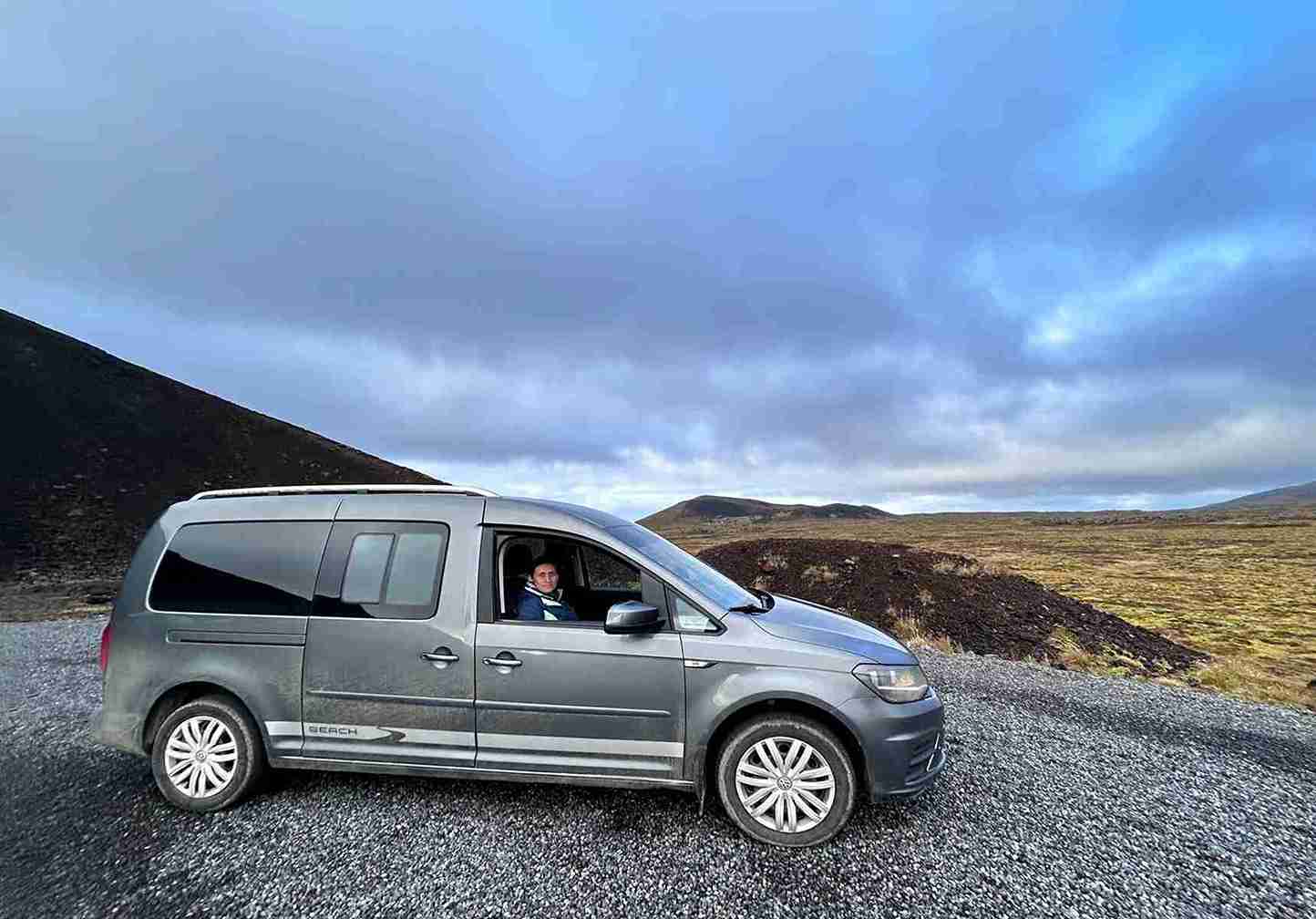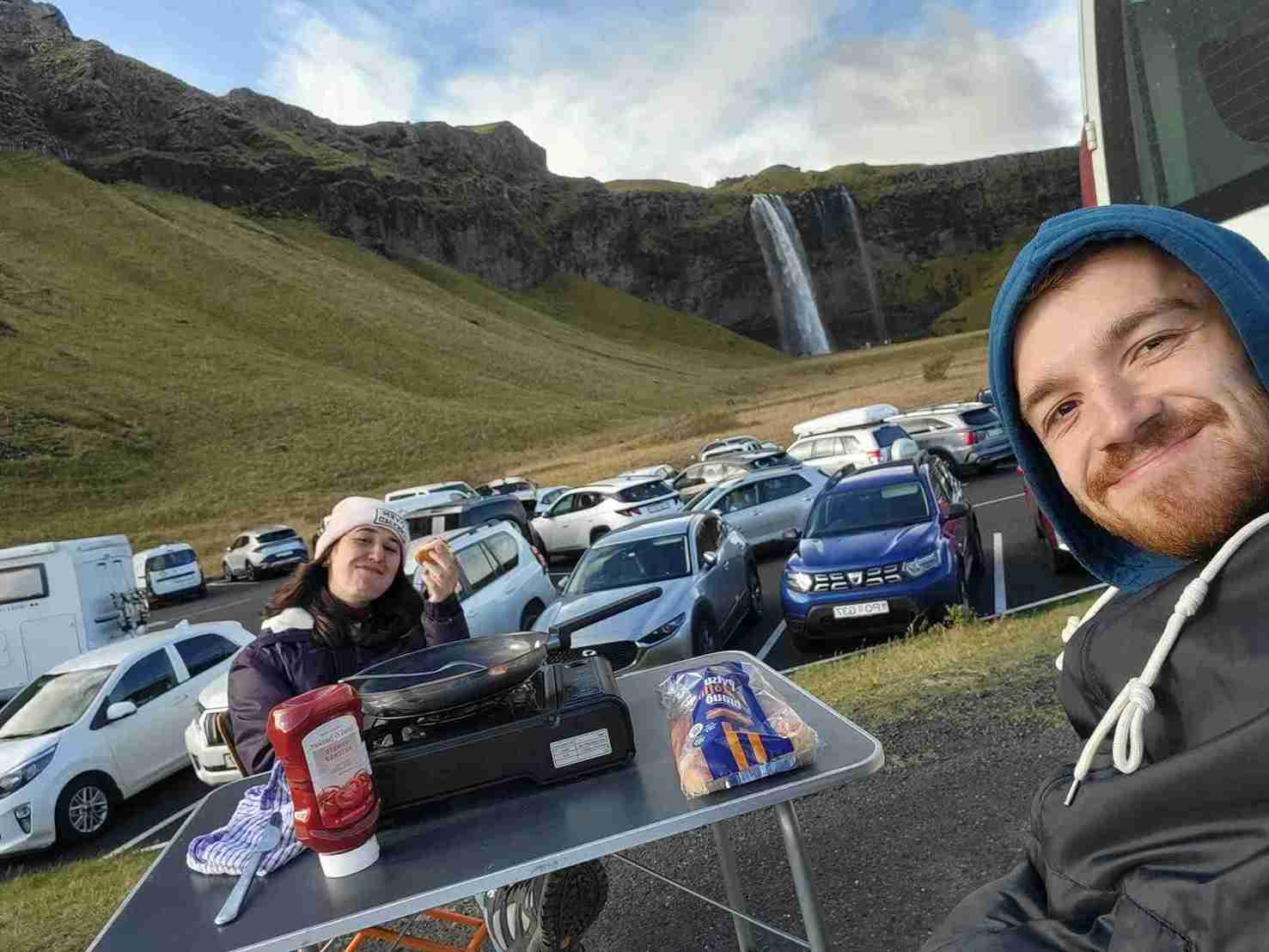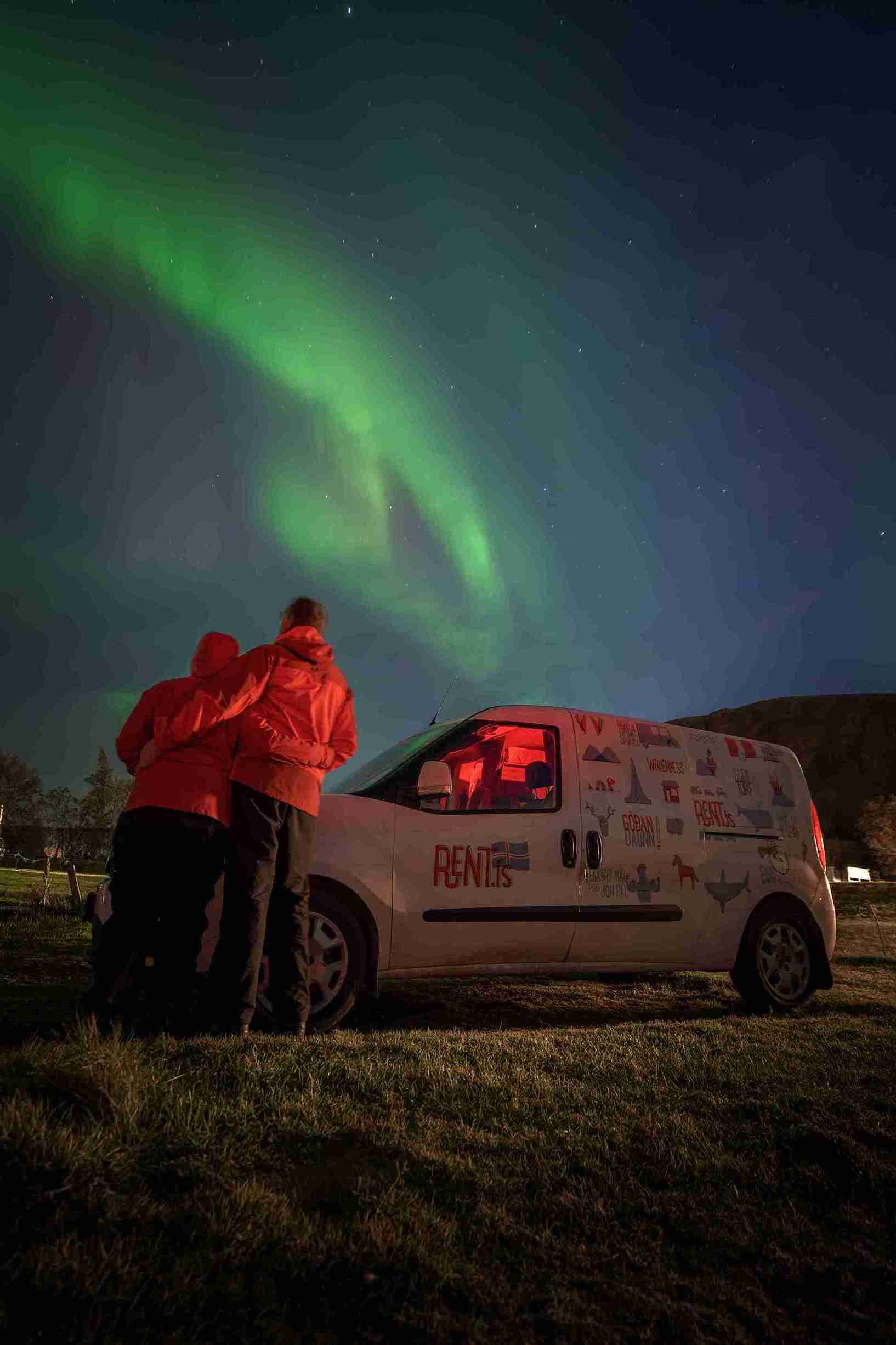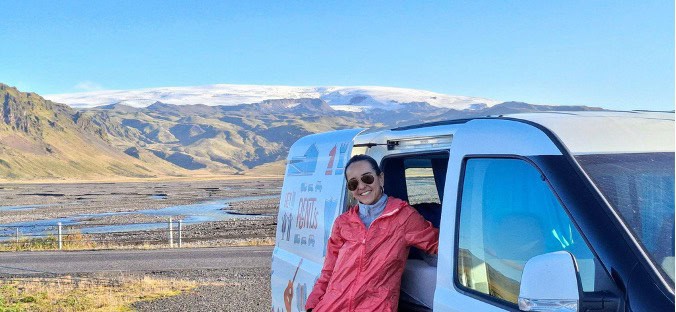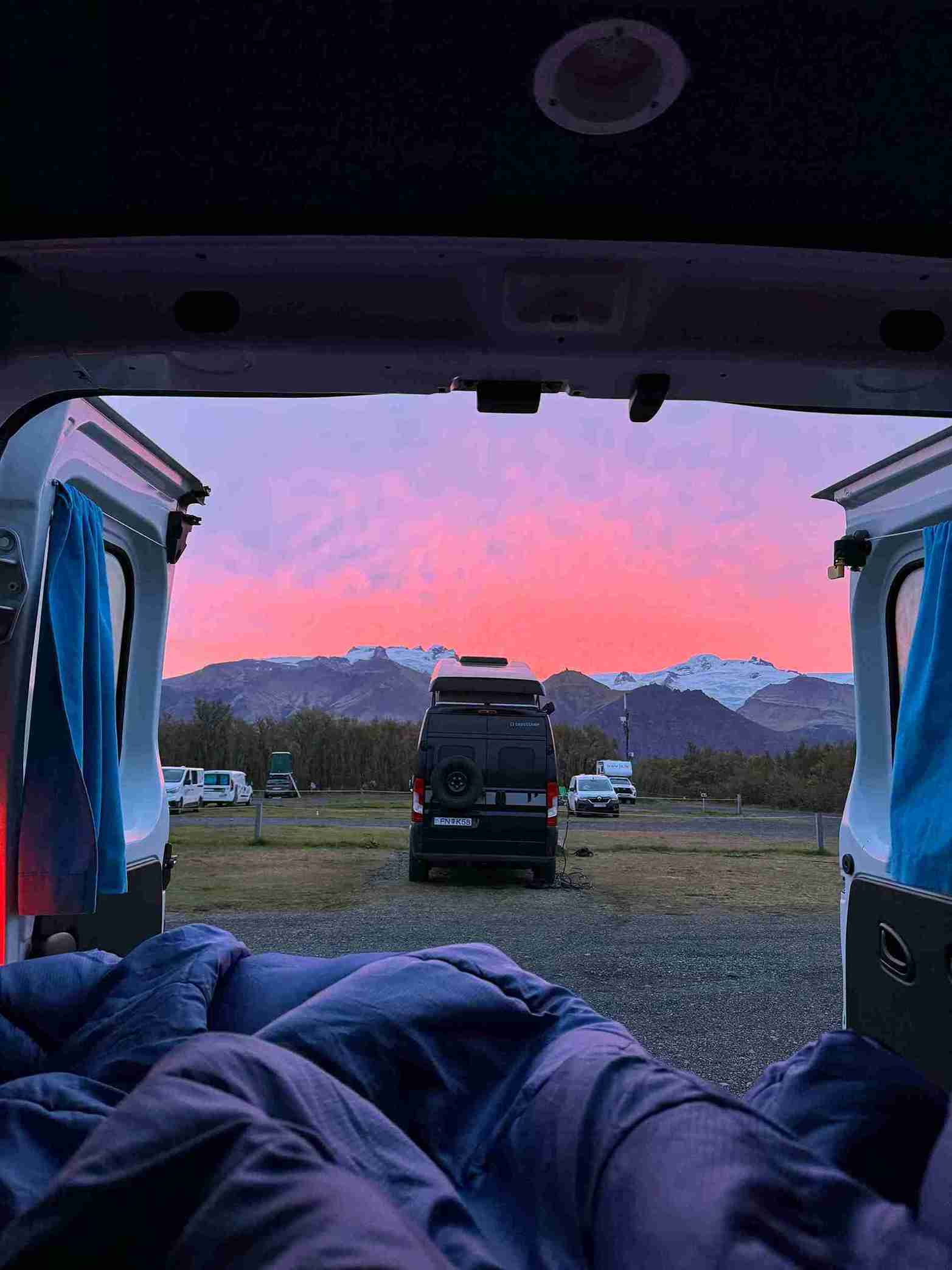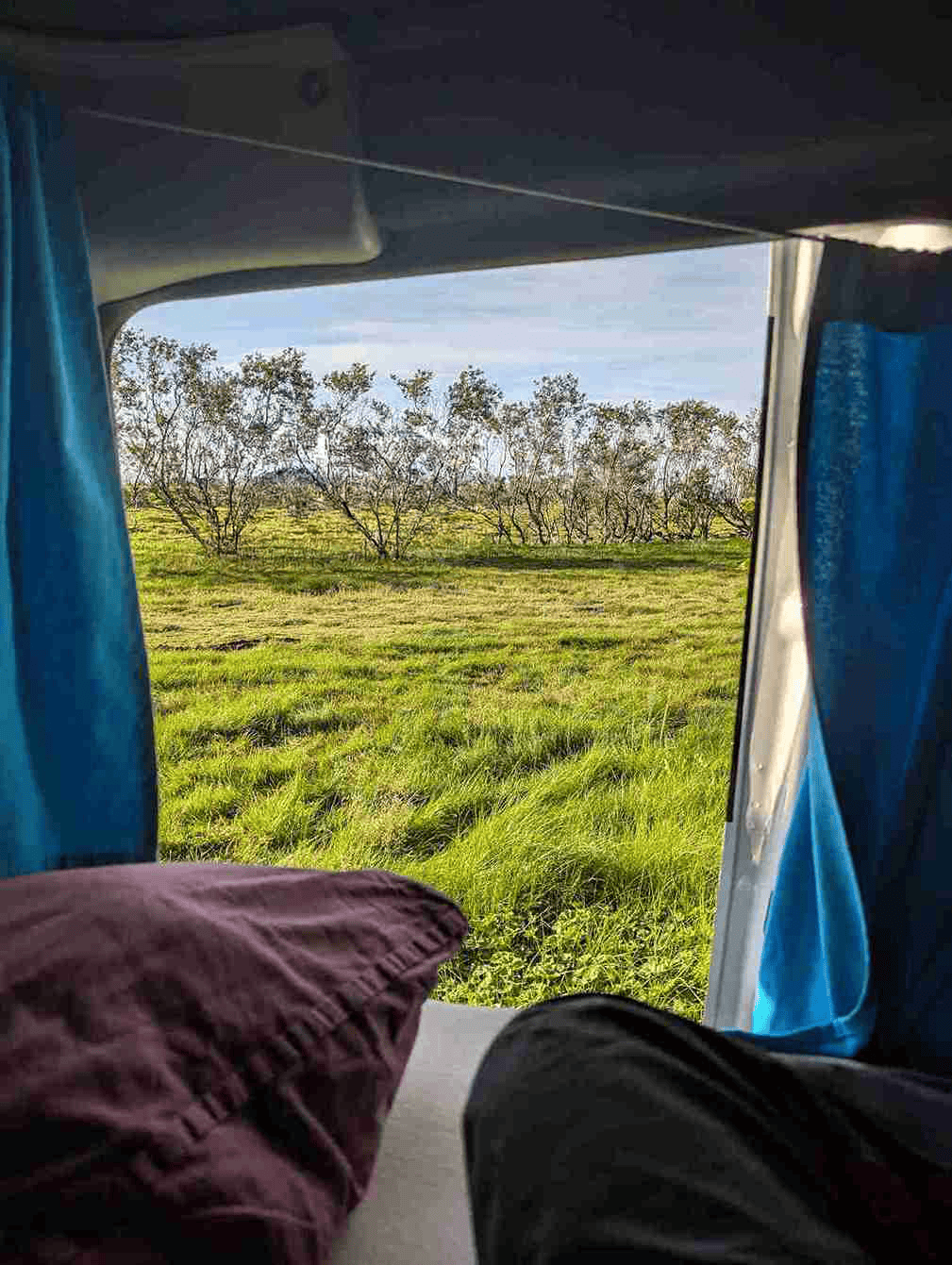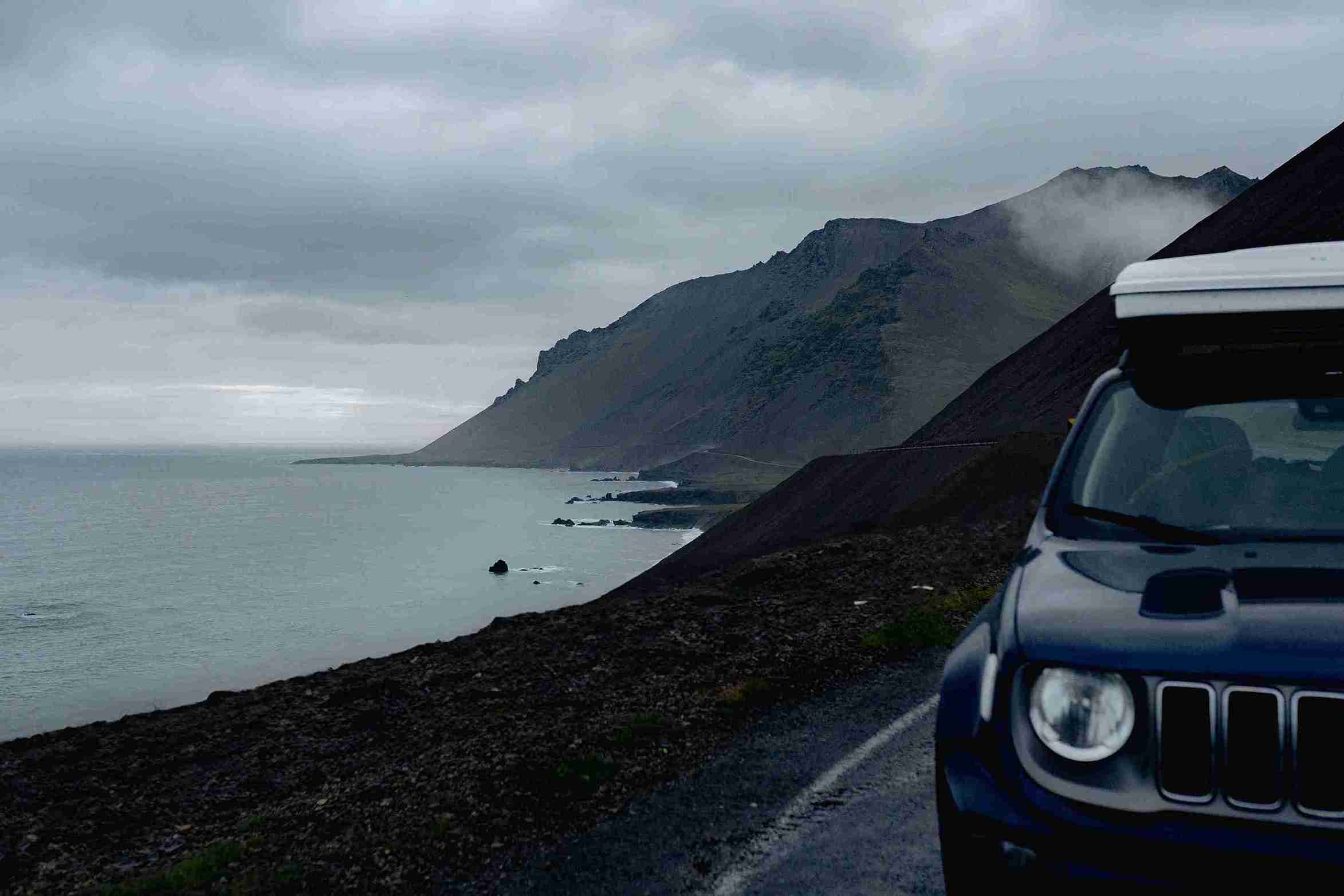The best Dos and Don’ts for an unforgettable road trip in the Land of Ice and Fire
Iceland is the country for roadtrips: beautiful uncontamined nature, jaw-dropping
waterfalls, heroic sagas, breathtaking volcanoes, dancing northern lights and relaxing hot springs, all in driving distance. If you’re itching for an experience you’ll never forget, Iceland is the place to be.
When my boyfriend and I found tickets that summed up to only €200 to go to Switzerland, Iceland and back home, we couldn’t believe it – a dream was about to come true! What we didn’t know was that it was going to be the toughest and most challenging adventure ever, not exactly what most people call a “vacation”.
Planning your trip
The most important factor that you should check before starting your trip is the weather, and by that, I don’t mean check if it’s sunny or cloudy: it’s going to depend on wind, temperature and the amount of rainfall. This because some of these could cause you serious problems driving your vehicle (as you will see further ahead in reading my unfortunate occasion). The best Icelandic website for weather forecasts is from the
Iceland’s Met office. You can also use it for Aurora forecasts, checking the solar activity and the amount of clouds in your area. It also has a valid app you can download, that allows you to set notifications for strong wind or rain. The other must-check website is
Road.is, vital to know the state of a road, specially in a season where everything can change from one day to another.
Not only in Autumn, in every season Icelandic weather is quite unpredictable. You might already be aware of the saying the nationals have: “If you don’t like the weather, wait five minutes”. Because it really does change that often! The following pictures were literally taken 10 minutes apart.
Hringvegur aka the Ring road near Borgarnes
Here are some planning tips for before your departure:
Do your research – find the places you are most interested in and, based on how long your
camper van rental is going to be, pick the places you simply can’t give up on.
Pick a direction (but be versatile) – have a rough idea whether you fancy going clockwise or anti-clockwise on your journey, if you are going to complete
the Ring Road or if you are going back.
Set a budget – choose your
campervan wisely thinking about the season, your needs and the time of your stay, and get familiar with icelandic prices: you could be surprised about the difference compared to your country.
Don’t fall for tourist traps – for some tours and *cough cough* lagoons, you might end up paying more than a hundred euros, check your alternatives and value what it’s really worth. (E.g.: The Blue Lagoon basic offer + transfer €77; Mývatn Thermal Baths student option €17; public baths with sauna and hot tub in minor cities €3, in Reykjavik €8).
Don’t buy water – I’m really serious on this one! The national treasure is free, and always will be! Bring a bottle or container with you, you can ask every
gas station on the road for a refill from the tap. Souvenir shops will try to sell you a 50cl bottle for €2 – don’t get fooled.
Get packed right – don’t underestimate the temperature and protect your skin. You will need woolen socks, thermal clothing, a heavy jacket, and… a swimsuit, sun cream and sun glasses, all year round! Don’t forget your towel.
Day 1 – Snæfellsnes Peninsula
We arrived in Keflavik Airport on a foggy Tuesday morning, after already letting my emotions flow on the plane because of how happy I was to be in Iceland, we headed to the
rental office.
Tip: There’s a free shuttle outside the airport that takes you straight to the rental office. The Rent.is office is GoIceland.
Here we met a woman who told us about our camper, explained the terms and conditions and we were off to hit the road. Our routine was supposed to head north, the first day was exciting and fortunately, the weather was “good”, too. After stocking up at Bónus Supermarket in Borgarnes we were ready for an adventure.
Shopping tip: Bónus is the cheapest supermarket in Iceland. It has all you may need for your journey, since you have a cooking stove and a fridge in your van, but consider that if the weather is bad you might not be able to cook, so store some sandwich material, too. Tomatoes and cheese spread are good options.
Akranes Peninsula
The plan was to visit Lóndrangar, a falesian coast with
black sand beaches and odd rock formations, then the Snæfellsnes National Park and sleep in a small town in the north of the Snæfellsnes Peninsula, Grundarfjörður (known for being close to the most famous mountain in Iceland, Kirkjufell). We had installed the Veður app (
iPhone &
Android) on our phone and a notification arrived: “Winds stronger than 20 m/s in the western part of Iceland”. We just shrugged and moved on. It was an awesome day, full of amazing sights. West Iceland is a mix of most of the spectacular views and natural elements you can find in Iceland, if you don’t have much time, it’s a short drive from Reykjavik and enough to satisfy your eyes and heart.




We found a
camper parking and went to sleep, only to be awakened by the sound of the wind: it wasn’t just “over” 20 m/s, there were gusts up to 35 m/s, that means 170 km/h! We had no idea until we turned on the free WiFi and found out it was Hurricane Nicole, a tropical storm that had arrived guess where, exactly in the Snæfellsnes Peninsula.
Day 2 – Þingvellir Nationnal Park
The next morning we decided to drive away from the storm as soon as possible, but it turned out not to be our best idea. As we left Grundarfjörður, the weather became worse and the worst part was driving on a bridge looking at walls of water coming up from the ocean around us. Needless to say it was not my best day, and I had a panic attack. My boyfriend took over and drove us back, there was no way we could go forward. So after slowly shaking off the fear, we went to the information center, the cozy Emil’s Café was waiting for us, we took time to rest, since the evening wind was going to be even worse.
Weather tip: If you find yourself trapped in a strong storm, try to find a building to park up against making sure the wind comes from the opposite direction – don’t try driving, it could save your life!
Day 3 – Camping in Þingvellir
The next day, half of the day had already gone by, but that’s how it goes. You can’t just venture off during a dangerous storm because you don’t want to waste time, and I learnt that the hard way. Safety is something to take very seriously, and if you don’t feel like driving, don’t just base your choice on other campers, they might not have pondered their decision wisely. That evening we reached the Þingvellir National Park, where the wind had dropped and we managed to cook and have a warm dinner.
Camping tip: Most of the main campsites stay open even during low season, and even if they are technically closed, the WC services and hot water usually still work, though many campsites do close the taps because the water could freeze inside the tubes. Places like þingvellir, Skaftafell and major cities will have functioning services. This is also done to encourage campers to use campsites rather than park anywhere on the road. It’s dangerous to be in the middle of nowhere at night, as romantic as it seems. Furthermore, parking and driving off marked roads is strictly forbidden in Iceland: the vegetation takes centuries to grow, and tyre marks can remain for around a thousand years. Every time I see that Justin Bieber video in Iceland I go “He shouldn’t be doing that. Or that. That’s illegal. OMG please stop.” So really, please respect this beautiful country while driving.
Day 4 – The Golden Circle
It was time to visit the most touristic part of Iceland,
the Golden Circle, and for a good reason – in up to a four hour drive you get to see the ancient Viking Parliament site, the canyon between the American and European tectonic plates, the waterfall that plunges between them (Öxarárfoss), a volcanic crater lake (Kerið), two geysers (Geysir, the original geyser, and Strokkur, active every 6-8 minutes) and Gullfoss, an incredible waterfall. Being October, the colours of Autumn gave these places a special atmosphere.
Þingvellir tip: This area has a parking fee for visitors, but once paid you can park all aound the park the entire day. The ticket is purchasable at the visitor’s centre.
We managed to visit all this in the established time since we were trying to keep up with our schedule. By three o’clock we reached the south coast and the first stop was, obviously Skógafoss. Our faithful Lonely Planet’s cover was now right in front of us, with it’s full 60 metres in height that make you feel so small. You can even hike to the top to get a wonderful view. This waterfall is within 5 minutes driving from the Ring Road, and the parking is right under the waterfall, so for those who want spectacular without too much effort this is fantastic.
Clothing tip: In Iceland, no umbrellas needed, they become useless with wind, so may as well leave it at home and bring a raincoat with you. Don’t forget to wear your waterproof trousers and shoes while hiking near waterfalls – with the slightest gust of wind you can get soaked!
Skógafoss is within driving distance from Vík in Mýrdal, a southern town famous for its black beach, one of the most dangerous in the country because of the fast tide and strong waves.
On that evening we finally visited our first hot tub. If you are looking for something to do in the evening but you’re not in a very lively town, head to the pool. It’s the true centre of Icelandic social life. Open even in low season until 8pm most days, it’s good for you, relaxing and against all odds very cheap compared to Icelandic prices. This is because hot water runs right beneath the surface in most of the country. Icelandic houses don’t have other heating system apart from the natural hot water, so don’t complain if it smells like sulphur in a lot of places! 🙂
After a good soak it was time to reach Skaftafell camping site.
Day 5 – Jökulsárlón
It’s Glacier Day! Skaftafell is a major tour departure area because it’s right beneath the Vatnajökull Glacier, that occupies more than 8000 square kilometres, that means quite a lot of space for superjeep tours on ice and of course spectacular views. Note that tourists are not allowed to venture themselves on the glacier alone, only an expert guide can know where it’s safe because of the ever changing ice, mostly in Autumn because of melting.
Since we were a bit short of time, we could only choose one of the close options in Skaftafell: the waterfall, Skaftafoss, or the southern part of the glacier, both within a 45 minute walk, but in opposite directions. It’s not that waterfalls get less interesting, but we craved something new and the glacier was a bit closer. The view was breathtaking, sometimes in Iceland you end up wondering if you’re still on Earth or on another planet. It took some time to realize that there weren’t any rocks on the beach but instead great blocks of ice.
To remain in theme, we then moved on to Jökulsárlón Bay, where the icebergs leave the country and float off into the Norwegian Sea.
The most spectacular thing about glacier bays is they are never the same, the ice is constantly morphing and each block is different depending on how it was formed. This was one of my favourite days, but I assure you it would have been better if I had remembered to wear the waterproof trousers.
Now we wanted to drive the oriental fjords during daylight because of the spectacular views. Some points of it reminded me of Positano, a place near where I live in Italy. Just, well – colder. The falesian coast plunges down towards the roaring waves while there are thousands of birds around.
Birdwatching tip: If you want to get the most out of nature but also want a chance of seeing the northern lights, October is a little too late because migration season has already finished. So it would be best travelling during late september or during spring because of nesting season. Spring is said to be wonderful, but you have to be cautious if the ice hasn’t melted yet or you could have some route complications due to closed roads. www.road.is has you covered on road information. We reached Egilsstaðir and decided to stay for the night. The campsite was very efficient. This one too stays open during winter, so if you wish to stay you may leave your fee in the letterbox. They have a small common room where it’s nice to sit and maybe charge batteries or do laundry, even just to get out of the car without freezing outside.
Day 6 – East Iceland
I had been waiting to go to Seyðisfjörður ever since I had seen the pictures in my Lonely Planet guide, such a colourful picturesque town surrounded by waterfalls on a beautiful fjord. It didn’t disappoint me at all, the only problem was that we ended up there on a Sunday… so what we found felt like a just-abandoned ghost town (I only saw one person there in three hours of walking around!), no shops open, no-one walking their dog, just peace and silence.
Seyðisfjörður is a great taste of the fjords for if you’re in a hurry, it’s a half-hour drive from the main road near Egilsstaðir. It has some charming history about sunken ships and fires, but the best are the unique Norwegian houses. You only need a couple of hours to see Seyðisfjörður, but it’s a very pretty place to relax and just stroll.
The next stops were Dettifoss and Selfoss, because I’m all about those waterfalls. No two are the same and each has it’s own charm. Here is the waterfall with the largest fall and it’s nearby brother with some cool rock formations. These too are a small drive away from the main road and take around a 10 minute walk from the parking area.


The north offers great thermal options too, as mentioned in the planning trips. Mývatn! The lake is full of interesting natural phenomenons, such as cemeteries of lava columns, boiling ponds and of course is another great spot for birdwatching. Usually pools and spas stay open quite late, generally 10PM in summer and 8PM in winter, so it’s a good option to leave them until last, especially since most attrations and shops close around 5PM and there isn’t much to do during the evening outside the biggest cities. So Mývatn baths was our last stop for the day. Floating in hot water outside in the cold, looking up at the stars is one of the best sensations in the world. Since the lights are quite dim around the pool, when it’s not cloudy you feel as if you were falling into the galaxy the stars are so bright. We stayed as long as we could, and while heading back to our van a staff member told us it was an excellent idea driving now because the Aurora Borealis was starting to appear. Unfortunately I don’t have any good pictures of that since I took all my pictures with my phone, but here are some good tips on how to make the most of this particular experience.
Aurora tips: Check www.vedur.is for the aurora forecasts not only relying on the intensity of solar activity but mostly the clouds: if you’re in a cloudy area there will be no chance of seeing anything. Drive carefully and don’t get distracted, if you want to look at the sky park your car in a safe area (please don’t stop in the middle of the road!) and sign your presence there with a light or something that reflects. For photography: if you want a really good pic with a camera, take a tripod and use a remote switch, so you get less chance of vibration by not touching the camera. Batteries work better when warm, so keep spares close to your skin. That night we stopped in an open space for an hour or so to watch the lights dance in the sky, and then moved on to Akureyri, second biggest city in Iceland.
Day 7 – Akureyri
To be able to respect our deadline we did a quick walk through Akureyri before heading back to Reykjavik. Akureyri is a wonderful place, more a town where I’d live rather than just travel. The most famous attraction is the cathedral, twin to Reykjavik’s since they are both projects of Guðjón Samúelsson. We arrived during mass so unfortunately we weren’t allowed inside.
City visiting tips: Although you’d think, since Iceland doesn’t have many space problems, parking will be easy, but remember that city centres have fees depending on the area. Once you find a good spot for parking, both Reykjavik and Akureyri are wonderful to just stroll around, since most of the attractions are close you won’t even need public transport.
Another interesting place to visit is the Botanical Garden – Akureyri’s is the most northern garden in the world, containing as many species of plants possible for that climate. Lately it’s been a little abandoned, or maybe it was the arrival of winter, but it’s worth a walkthrough. Plus, who said Iceland is always grey and miserable? This was the best weather we had all holiday, after missing the sun for a while, Iceland showed us it’s potential – I think I’m going back during the summer!
The rest of the day was spent driving if not for lunch and breaks for leg resting.
Driving tips: Yeah yeah, you’ve heard it all before, but be sure that you are concentrated and awake while driving, take turns at least every three hours if you’re on a long run and stop at picnic areas every now and then. I mean, the view is always guaranteed to be great, so why not anyway?
Reykjavik has a very good camping area right next to the main city pool: the cost is reasonable, it’s central enough and you get loads of extras that make you feel, well, a little more human after living out of a campervan for seven days: a large common area with wifi and plugs near the tables, a huge kitchen area (where loads of people leave leftovers (so if you need some noodles or pasta check the food baskets before buying), and of course clean toilets, showers, and washing machines. We watched the aurora from our van’s windows before falling asleep during our last night of rental.
Days 8 & 9 – Reykjavík & The Blue Lagoon
I felt quite sad giving the car back, it felt like I was saying goodbye to my new little home. We had another few days left in Reykjavik and every time we saw “our” car we pointed it out. The experience in cities is different, first of all because you have quite a lot more buildings and people around, sightseeing is mainly for museums and monuments rather than volcanoes and waterfalls. This city is wonderful. We followed a free walking tour on the first day and our guide told us so much about Icelandic history I just couldn’t get enough.
I have become quite obsessed with runes and Vikings and nordic sagas since then. It was also an occasion to try Icelandic cuisine (other than supermarket yogurt). We chose to visit the Saga Museum, the Penis Museum (for science purposes, obviously), the thermal pools, the famous church Hallgrimskirkja, the Harpa Concert Hall, Perlan, the Sun Voyager and the most important place of all… Baejarins Beztu. I can’t even say I’m joking, the best thing in Reykjavik were the hot dogs, and any local will tell you the same.
Speaking of locals, Iceland is a cold country with warm people. It feels surreal the way everyone is kind, nobody steals, there is no violence or poverty. Police don’t carry guns, they save cats from trees and take selfies with them. The Prime Minister says hello to locals in front of the Parliament which doesn’t have guards. I could go on and on about how much I’ve fallen in love with this wonderful country (my friends hate me for always talking about it, by the way)…
The last day we had a dip at Blue Lagoon before heading to the airport, but the weather wasn’t in our favor anymore.
On my last day in Reykjavik, it started snowing. Luckily we had those thermal jackets and trousers that I will keep swearing by for Icelandic weather, and the essential rain coat and waterproof trousers that made me look funny but kept me nice and dry.
So this is the end of my wild Icelandic journey!
Blue Lagoon tip: If you are lucky enough to afford the products, they are a little bit cheaper at the airport compared to the in-store shop. I guess everyone tries to keep Iceland in their heart in a different way.
The best tip I can give you?
Get out there and explore Iceland!
Happy Camping! #CamperStories
Iceland Travel Guides


If you like what you see, please subscribe to our YouTube channel!


